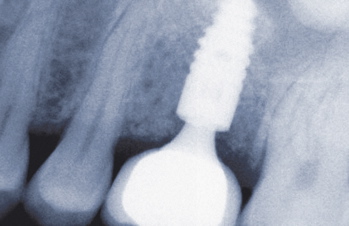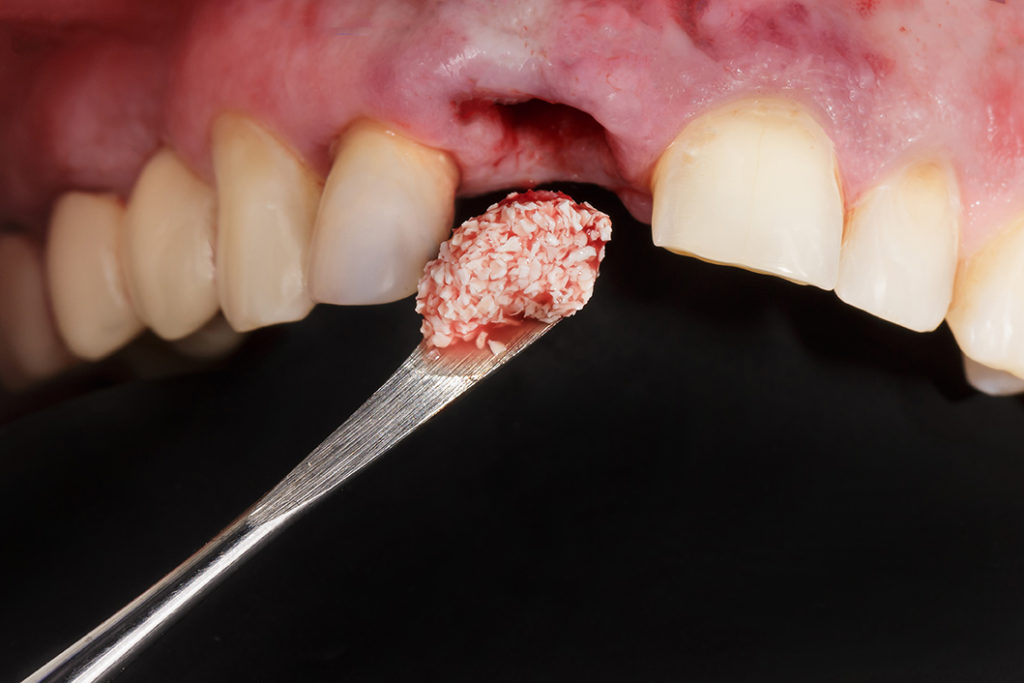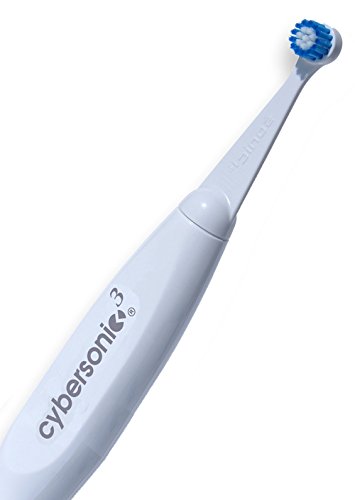Bone Graft For
Dental Implant
A bone graft for dental implant treatment may be necessary if your jawbone isn't thick enough in the spot where the implant needs to go. Bone grafting is a well-established technique for dental implants with a high success rate.
Why would there be too little bone?
There are two main reasons for needing a bone graft for dental implant placement:
First, the tooth may have been pulled some time ago, and the jaw bone has just shrunk down with time. Each year that goes by, the jaw bone shrinks a little more, although this process slows down over time.
After a number of years, the bone where the tooth used to be has shrunk down vertically and also horizontally; the jawbone is not as thick from front to back as it used to be.

Second, infection. The most usual cause of bone loss is the infection involved in gum disease. If you have gum disease around a tooth, the bone around that tooth shrinks down bit by bit, until the tooth gets loose, and you get it taken out. But taking the tooth out doesn't help the bone to grow back again. It stays shrunk! And even shrinks a little more as time goes by.
As you can see, jawbone around teeth always tends to get less! It NEVER grows back! Nobody has been able to make jawbone grow back to its previous shape and size.

So now you want to replace the missing tooth, and your dentist tells you that you need a bone graft for dental implant treatment to be successful. What does that mean?
It means that your dentist will have to build up the bone in the spot where the implant needs to sit. We know that he can't make it grow back by magic. So what does he do?
He adds some bone that he has taken from somewhere else. But where can he get bone material from? There are a few possibilities here.
Bone Graft for Dental Implant Treatment
If he only needs a little additional bone, he can collect the tiny bone chippings from the hole he drills to put the implant in. While he is slowly drilling the hole to make space to put the implant in, his assistant will be vacuuming up the slurry of sterile saline solution, blood and bone fragments.
These are collected in a small trap on the vacuum device. When the dentist is happy that the hole he has created in the jaw bone is the correct size, shape and position for the intended implant, he will empty the trap onto a sterile pad to see how much material has been collected.
He can then used the collected bone chippings and blood to fill in any areas of thin bone around the implant. Sometimes, he can also add an artificial bone substitute to the chippings to gain a little extra bulk.
Artificial bone substitute is like a coarse powder, and it can be manufactured from two sources; either denatured, sterilized bovine bone, or fully synthetic materials such as hydroxyapatites and dicalcium phosphates.
 Adding some bone slurry to the implant socket
Adding some bone slurry to the implant socketBUT if he needs MORE bone than that, then he will have to take a small block of bone from somewhere else in your lower jaw. There are TWO possible areas where the dentist may be able to take some bone for the graft.
The first place to look is usually at the back of the lower jaw, behind the last molar where the wisdom teeth would be.
The second place to look would be the bone over the roots of your lower front teeth just above your chin.
How does he decide which area to take bone from? He needs to look at X-rays and CT scans of your jaw to see where there is thick bone. It depends how much bone there might be
available at the potential donor sites. The dentist will want to pick the site that has the thickest bone, so that there is plenty of bone left behind.
Bone Graft for Dental Implant
After the surgery to collect some bone, the bone cavity that is left behind heals up and mostly grows back to almost the same shape as before. Of course, there will be some pain in the donor area until it is fully healed. Rarely, the lower front teeth can be affected by the procedure. They MAY become a little less firm, but this is unusual.
So now the dentist has a small block of bone taken from either behind the lower molar or chin, but he can't simply wedge that block of bone into the bit of jaw where the dental implant needs to go. It is the wrong shape and size. So, the dentist puts the small block of bone into a small device called a bone mill. This reduces the block of bone to bone chippings.
The dentist then packs the bone graft chippings into the spot where the implant needs to go. Sometimes he has to do this first, and let it heal for 6 months before he puts the implant in.
At other times he can put the implant in straightaway and do the bone graft for the dental implant at the same time. It all depends on several factors which your dentist must weigh up.
While the area around your new bone graft is healing, (and also the donor area, if your dentist had to take a little bone from somewhere else in your mouth), it is vitally important that you keep dental plaque from building up.
You have to keep everything really clean, otherwise infection can get in and interfere with the healing process. But you have to be very gentle, too, especially in the first few days after surgery.
I have found the best solution is to use a sonic toothbrush with the highest possible frequency. This means than it feels more like a very gentle buzz on your gums, rather than the more coarse vibration that you get with a conventional electric toothbrush. The toothbrush with the highest frequency is the Cybersonic 3.
RECOMMENDED TOOTHBRUSH
I strongly recommend the Cybersonic 3 sonic toothbrush. I think it has the best performance of any brush I've tested, and you can get it at a great price (50% off!) if you use the discount code on Best Sonic Toothbrush.
I do NOT receive any commission from Cybersonic - I just think it's the best brush.
This will produce the best cleaning with the least vibration during the important healing phase of your implant treatment.
To help prevent plaque building up, you should ALSO use both an oxygenating toothpaste and an oxygenating mouthwash; the BEST are from TheraBreath.
The first one is TheraBreath Oxygenating Toothpaste.
The SECOND one is a TheraBreath Oral Rinse.




